#Andrea Éva Győri
Explore tagged Tumblr posts
Text

andrea éva győri bold head with tongue (2019). pencil and gouache on paper, 29.7 x 42 cm
5 notes
·
View notes
Text
Short List 2019 Esteházy Art Award
https://www.facebook.com/events/571204290121177/

scroll down for English version:
2019. december 12. 18 h – Díjátadó ünnepség 2019. december 13. – 2020. január 26. - Kiállítás a Ludwig Múzeum – Kortárs Művészeti Múzeum 2. emeletén
A 2009-ben megalapított díj célja a kortárs képzőművészet és a nemzetközi párbeszéd támogatása. Az egyenként 5000 euróval jutalmazott díjat kétévente, három, 45 év alatti képzőművésznek itéli oda a független szakmai zsűri. A pályázaton festészettel és festészettel határos technikákkal lehet indulni. A zsűri 260 pályázóból választotta ki a díjra jelölt 25 művészt, akinek 2019. december 13-tól 2020. január 26-ig lesz látható a kiállítása a Ludwig Múzeum – Kortárs Művészeti Múzeumban. A Short List 2019 kiállítás alkalmából a művészek ezúttal első alkalommal dönthettek arról, hogy térinstallációval is kívánnak-e pályázni. Az ennek keretében benyújtott, komplex művészeti alkotások magas színvonala egyértelműen megmutatta, mennyire összhangban állt ez a bővítés a művészek aktuális alkotói törekvéseivel. A kiállítás ennek megfelelően megpróbál minden nevezett művésztől lehetőség szerint több, egymáshoz és a térhez egyaránt illeszkedő művet is bemutatni. A 2019-es díjra jelölt művészek / The Nominees of 2019 are: Adam Albert, Róbert Batykó, Sári Ember, István Felsmann, Mark Fridvalszki, Kitti Gosztola, Andrea Éva Győri, Daniel Halasz, HeyWeSeeAskShowandDie (Csaba Árpád Horváth és Eszter Sipos), Dorottya Kalocsai, Adrian Kiss, Gábor Miklós Kristóf, Áron Kútvölgyi-Szabó, Mátyási Péter, Judit Lilla Molnár, Zsolt Molnár, Nagy Barbara, Marton Nemes, Peter Puklus, Anikó Süttő, Robotto Szabó Ottó, Péter Szalay, Gergo Szinyova, Kata Tranker, Adam Ulbert.
Founded in 2009, the Esterházy Art Award supports contemporary Hungarian art and its international exchange. It consists of three prizes of €5000 each, awarded every two years to artists selected by an independent international jury. It is an open call eligible to all Hungarian artists below the age of 45 working in painting and other associated techniques. 260 Applications were received for the “Esterházy Art Award – Short List 2019” An expert jury nominated 25 artists from this impressive pool of potential applicants for this year’s Art Award. The anniversary exhibition from the works of the 25 artists will be open to the public from 13 December 2019 until 26 January 2020. On the occasion of the “Short List 2019” exhibition, the artists were free to also submit installation entries for the first time. The high quality of the more complex groups of works submitted clearly illustrated how fitting this extension was to the current creative efforts of the young artist. Accordingly, the exhibition attempts to present preferably several works, coordinated with each other and with the space, by the nominees.
#Short List 2019 Esteházy Art Award#Albert Adam#Róbert Batykó#Sári Ember#István Felsmann#Mark Fridvalszki#HeyWeSeeAskShowandDie#Csaba Árpád Horváth#Eszter Sipos#Mátyási Péter#Molnár Zsolt#Áron Kútvölgyi Szabó#Peter Puklus#Péter Szalay#Kata Tranker#Kitti Gosztola#Andrea Éva Győri#Daniel Halasz#Dorottya Kalocsai#Adrian Kiss#Gábor Miklós Kristóf#Judit Lilla Molnár#Nagy Barbara#Marton Nemes#Anikó Süttő#Robotto Szabó Ottó#Gergő Szinyova#Ulbert Ádám
5 notes
·
View notes
Photo
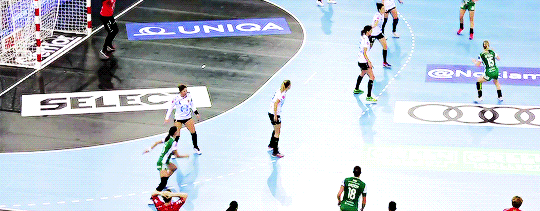
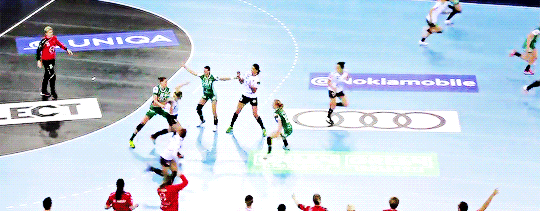
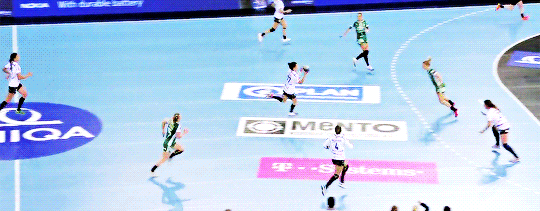
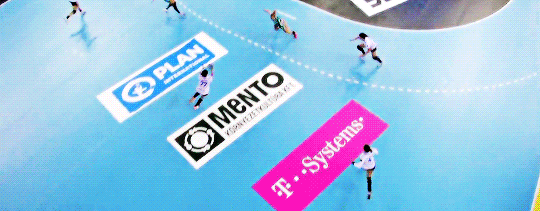
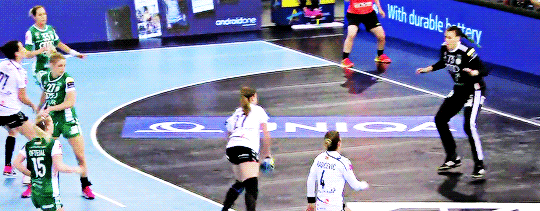
Győri ETO KC keeper Éva Kiss makes the stunning, game-winning save in a 1v1 situation with Vardar's Andrea Čanađija with 6 seconds left on the clock in the overtime of the 2018 EHF Champions League final against ŽRK Vardar 👌
18 notes
·
View notes
Photo

TURULJÁTÉK - Női ranglista
1.Joó Gyöngyi – 13x egyéni és 15x páros szegedi bajnok 203 pont
2.Börcsök Abigél – 7x egyéni és 16x páros szegedi bajnok
1x nemzetközi egyéni és 2x páros bajnok 155 pont
3.Császár Hédi Gyöngyi – 1x egyéni és 6x páros szegedi bajnok 57 pont
4.Berecz Andrea – 5x páros szegedi bajnok 43 pont
5.Nagy Ágnes Virág – 1x nemzetközi páros bajnok
2x szegedi páros bajnok 20 pont
6.Dancsó Etelka – 3x páros szegedi bajnok 17 pont
7.Molnár Gyöngyi – 1x egyéni szegedi bajnok 16 pont
8.Márkus Aranka
Németh Ágnes – 2x junior egyéni és 2x páros szegedi bajnok 14 pont
9.Márkus Jánosné 13 pont
10.Doktor Mária 12 pont
11.Berecz-Varga Zsuzsanna
Hocza Ágnes 11 pont
12.Kiss Sára 10 pont
13.Tokodi Margaréta – 1x páros szegedi bajnok 8 pont
14.Apjok Katalin – 1x páros szegedi bajnok 7 pont
15.Keresztúry Adrienn – 1x egyéni szegedi bajnok
Zsivicz Dorina – 1x nemzetközi ifjúsági egyéni bajnok 6 pont
16.Bánkuti Klára – 1x páros szegedi bajnok
Fülöpné Dóra Mariann (Gyöngyös)
Garamvölgyi Judit
Lipták Anna
Simoncsics Ildikó
Zeller Abigél 5 pont
17.Duba Diána
Major Éva 4 pont
18. Arkauer Tiborné –1x páros szegedi bajnok
Bozsár Liza
Dervarics Lilla
Németh Hanna Júlia
Rocskár Ildikó – 1x serdülő egyéni szegedi bajnok
Schmödl Emmi – 1x páros szegedi bajnok
Szászi Veronika – 1x ifjúsági egyéni szegedi bajnok 3 pont
19. Antalffy Ágnes
Csóti Ildikó
Dervarics Bernadett
Hollender Emma
Erdődi Anna
Fiedler Judit
Győri Emilné
Hajdú Csilla
Ihász Ildikó
Kocsis Enikő
Kókai Dalma
Németh Anikó
Simicz ilona
Sóti Boglárka
Szilágyi Nóra
Tóth Éva
Vadkerti Gréta
Varga Réka
Vas Andorné
Várhelyi Ágnes 2 pont
20. Ciocanel Diána
Cságoly Éva
Kertész Dóra
Király Veronika
Magosi Anna
Németh Anikó
Schilsong Enikő 1 pont
0 notes
Text
Győri Andrea Éva: Phantasy after Analyses
A Fotóhónap2018 kiállítása
2018. november 14. – december 2., MIKVE Galéria – Budavári Palota nyugati pincerendszer (1014, Budapest Palota út 1.)
Győri Andrea Éva első magyarországi kiállítása az emberi test és a tudat kapcsolatával foglalkozik. Személyes és közösségi lét határán mozgó viszonyokat modellez, azaz az intimitást, maszturbációt, vágyakat, párkapcsolatot és a betegség következtében…
View On WordPress
0 notes
Text
Programajánló a Komáromi járásból
Érdekes és változatos programokkal várja az érdeklődőket a Komáromi járás március 6. és 12. között is.
Érdekes és változatos programokkal várja az érdeklődőket a Komáromi járás március 6. és 12. között is. Mutatjuk a részleteket!
Március 7.
Csicsón kerül megrendezésre a Közösség és érték – települési értékek feltárása konferenciára, melyen kiértékelik a Településeink értékei pályázatokat is.
Szerda délután 16 órakor az “Akiket Isten kihívott csatára” című kötet bemutatójára kerül sor a komáromi Nádor utcai könyvtárban.
forrás: facebook.com
Március 9.
Felvidéken csak Gútán lesz látható a SOLUS CHRISTUS c. táncszínházi előadás a reformáció 500 éves évfordulója alkalmából a DUNA MŰVÉSZEGYÜTTES előadásában. Bővebb információk itt.
forrás: facebook.com
Március 10.
Szénássy Árpád születésének 65. évfordulója alkalmából ünnepi megemlékezést tartanak Komáromban.
forrás: facebook.com
Nőnap alkalmából Gúta városába látogat Csepregi Éva és Varga Miklós. A zenés esten fellép még Bányóczky Nóra a Győri Nemzeti Színház színésznője és Balogh Gábor a Magyar Lovas Színház színésze, akik duettekkel is kedveskednek a közönségnek. A rendezvény szervezője a KulTúra.
forrás: facebook.com
A gelléri Bogyó és Babóca Óvoda Szülői Szövetsége, szeretettel meghívja önöket a Nőnap alkalmából megrendezésre kerülő jótékonysági, Retro Party-ra, amely 2018 március 10-én, este 21 órakor veszi kezdetét a helyi kultúrház nagytermében. Jegyek elővételben vásárolhatók. Bővebb infó itt.
forrás: facebook.com
Március 11.
15 órai kezdettel a komáromi Duna Menti Múzeum dísztermében tartják a “Töretlen hittel ember és magyar” c. Wass Albert Gálaestet.
forrás: facebook.com
18 órától a Bátorkeszi kultúrházban tekinthető meg a Körúti Színház A”B” terv c. vígjátéka.
forrás: facebook.com
Összeállította Komjáthy Petőcz Andrea
Nyitókép: Körkép.sk/kpa
0 notes
Text
Inside the Weird and Magical Collections of Artists

Eric Baudelaire. Courtesy of the artist and Art Brussels 2017.

Josephine Meckseper. Courtesy of the artist and Art Brussels 2017.
Spend enough time with artists and you’ll find that most are collectors of one sort or another. Jeff Koons, for example, famously indulges his appetite for Old Masters paintings and works from the 19th century. Others accumulate far less precious things: knickknacks, tchotchkes, even restaurant menus. Why? Koons has said that his collection serves as source material for his own output; in other words, art begets more art. But a better answer, one expansive enough to encompass even the most mundane tastes, is that things beget emotions.
This April, a pop-up exhibition within the 2017 Brussels Art Fair explored this proposition. Curated by Jens Hoffmann and Piper Marshall, “Mementos: Artists’ Souvenirs, Artefacts, and Other Curiosities,” sought, in Hoffmann’s telling,“to bring in a completely different idea of value that isn’t always present in an art fair itself.” The curators asked 73 artists to loan them objects of personal or emotional value, along with a brief text detailing the story behind each object.
Few of those objects in the exhibition had any inherent or resale value. In fact, the show offered up any number of things that make us ask why one might want to own them at all, things that, were they not presented in the sort of large vitrines you might find in a natural history museum, could easily be mistaken for castoffs destined for Goodwill or the garbage.
French artist Laure Prouvost contributed a dessicated teabag, for instance. While it happened to dry in a sculpturally compelling way—she likes its “unusual shape”—Prouvost chose the bag for the web of associations connected with it. For one, it reminded her of the years she spent assisting the artist John Latham, whom she considers her “conceptual godfather.” In the studio, Latham always insisted they dry and then reuse teabags. “So, the teabag,” Prouvost explains, “became a symbol of my experience with him.” Tea has also been a component of her work for quite a while. For a spring exhibition at London’s Serpentine Gallery, she contributed a number of teabags drying on a radiator grill; teapots figure in her piece Wantee (2013), which is in part a fictional meditation that reimagines Prouvost’s grandfather as a conceptual artist.

Installation view, "MEMENTOS Artists’ Souvenirs, Artefacts, and Other Curiosities" at Art Brussels 2017. Photo David Plas. Courtesy of Art Brussels 2017.
It turns out that the things people have lying about are terrifically engaging (philosopher Martin Heidegger’s outhouse toilet seat, anyone?), particularly when they come with private stories attached. When I ran into him there, the British artist Shezad Dawood said he thought the show succeeded so brilliantly because it “indulges our innate perversion of wanting to go through someone else’s knicker drawer.”
Of course, when you rifle through someone else’s private things, sometimes you come upon things you don’t exactly need to see, such as the attractive glass bubbles that the Hungarian artist Andrea Éva Győri has filled with her father’s sperm. (An accompanying text helpfully informs us that Győri’s mother collected it.)
Still, even if it is prurience that first attracts us to such mementos, the stories behind them illuminate one of the most pervasive attributes of contemporary art: nostalgia. We encounter it in every fair and gallery—a wistful yearning for analog photographs, outdated video games, broken-up bands, old typefaces, toys, not to mention bygone styles of painting and design. A catalogue of longing could stand in nicely for one of recent artworks. It seems to me that what gave “Mementos” lasting significance was that, without explicitly trying, the exhibition parsed an entire grammar of nostalgia.
There is the odd, everyday thing—like Prouvost’s teabag—that becomes a Proustian madeleine, calling to mind a host of past experiences. There is the heroic object, such as the saw-toothed shark’s jaw that Benoît Maire keeps to remind himself of, he writes, “a decisive moment in my life.” (While diving off the Ivory Coast in 2004, he came face to face with a large shark—and killed it with a harpoon.)
As spectators outside the action of these artists’ inner lives, we have to take such stories at face value—and the phrase is key, for it is the tales associated with them that imbue these objects with emotional or personal worth.

Malgorzata Szymankiewicz. Courtesy of the artist and Art Brussels 2017.

Kendell Geers. Courtesy of the artist and Art Brussels 2017.
This is true, it seems, even when the stories are false. American artist Betty Tompkins loaned a carved wooden box that her grandfather made, according to family lore, in debtor’s prison before World War II. Later, after Tompkins had sent the box and her text to the show’s curators, she found out the real history. Debtors’ prisons were already a thing of the past by the time her grandfather was incarcerated. Instead, he had been busted for a fleecing scheme, and he entrusted his furniture business to a brother-in-law while he was away. When he got out, the brother-in-law refused to return the business to him, and so, on the night of his daughter’s (Tompkins’s mother’s) high school graduation, he killed himself. A tale of woe, yet one that only adds to the wooden box’s emotional patina.
The American artist Eric Baudelaire collects his grandfather’s paintings precisely because they’re fakes. The work he displayed in Brussels, seemingly a portrait of the great poet and critic Charles Baudelaire by Émile Deroy, was in fact one of many copies Baudelaire’s grandfather made (and which Eric grew up believing were real). And whether or not the lineage implied by the canvas and the artist’s famous patronymic is real is anyone’s guess. “Fake is great,” the artist writes.
As is misdirection. Perhaps the last thing we might have expected from the seminal American photographer and filmmaker Larry Clark was the paintbrush he sent in for this survey, yet there it is in the vitrine. Clark took up painting at age 71 while recovering from surgery because, he writes, “it was something I could use without a lot of effort to capture my thoughts.” Painting, he says, has entirely shifted his approach to artmaking.

Installation view, "MEMENTOS Artists’ Souvenirs, Artefacts, and Other Curiosities" at Art Brussels 2017. Photo David Plas. Courtesy of Art Brussels 2017.
Psychologists regard nostalgia as a means of sustaining self-continuity: It’s the emotional fuel that drives the stories we tell, linking the person we once were to the one we are today. You might keep a meaningful tool, like Clark’s brush—or a sentimental item, like the small, blue velvet pouch with the ashes of a childhood dog, Tyler, that L.A.-based artist Alex Israel displayed. (The kitsch object being another common type of nostalgia item.)
When I asked him about it, Israel told me he hasn’t collected the ashes of any other dead pets but that he does have a bin in his studio, which he calls the Scrapbook. “In it,” he says, “you’ll find everything from a menu from Kate Mantilini (a Morphosis-designed L.A. restaurant I once frequented that’s now closed), to a Kardashian family Christmas party favor: a crystal bowl etched with jaguars around its rim. I’m always auditioning objects, looking for stars to cast as sculpture in future projects.”
Studios have become beaches on which the scraps and oddments of an artist’s life washes up, only to be recycled, given new roles in new dramas. As we sift over those beaches, we learn much about the collecting artist but also about ourselves. Repositories of memory and sources of inspiration, the nostalgic objects artists keep “could also be said to be cultural markers,” says Marshall. Each tells part of the story of “how we’re negotiating various systems.” These items may help forge our ongoing sense of self, but in aggregate they fill in a picture of the culture from which they, and we, come. For Marshall, this makes such items inherently political.

Photograph of Josephine Meckseper’s bookshelf by Daniel Dorsa for Artsy.
Josephine Meckseper would certainly agree. For her installations, the German-born New Yorker gathers readymades—everything from hosiery to old advertisements to sculptural models—which she thinks of as “as signifiers and representations of capitalism.“ Bringing them together in her mirrored displays is “like looking at culture through collective eyes, and he eyes of future generations.”
While not a collector of things, she considers herself rather “a temporary custodian of objects,” in part because, she says, “I grew up in a large, old house in Germany filled with my parents’ collections of old 19th-century toys, contemporary art, and rooms filled with bookshelves. Subsequently, I don’t feel the urge to collect.”
Interesting that for us the word collect has come to mean own. Meckseper might not consider herself a collector, but she does accumulate things—mostly books. ( “Primarily,” she says, “because I read them.”) To the Brussels show, she loaned a first edition of Hunter S. Thompson’s The Great Shark Hunt, an overt cultural marker—it compiles the late author’s gonzo political journalism—that functions, too, as a comment on the current cultural and political situation. It is also, inevitably, nostalgic, as Meckseper herself obliquely acknowledges: “Now that we have entered a digital age, the book as a physical object containing narratives and content on a page feels even more significant.”

Installation view, "MEMENTOS Artists’ Souvenirs, Artefacts, and Other Curiosities" at Art Brussels 2017. Photo David Plas. Courtesy of Art Brussels 2017.

Kris Martin. Courtesy of the artist and Art Brussels 2017.
Meckseper’s practice provides a glimpse into the way certain people transform ordinary objects that are invested with cultural sentiment into art. Today we call those people artists. In the past, it was shamans or priests who transmuted common, artisanal things into magical entities. Which goes a long way toward explaining why the Dutch artist Folkert de Jong collects tribal art along with contemporary works. Pieces like the Indonesian fertility sculpture, with, de Jong writes, “funky hair and oversize penis,” which he showed in Brussels, put him “in contact with something primal and connect me to the fact that we are part of nature.”
Dawood is himself the owner of an assortment of ancient Egyptian magic and occult items. “I have a shabti, which is a ceramic glazed mummy, in blue,” he tells me, “and a beaded mummy mask, as well as two or three magical amulets.” At “Mementos,” you could gaze upon his pair of kohl-rimmed eyes, from an ancient Egyptian sarcophagus, mounted on a brown Perspex stand, and which he bought in Paris. The platitude of the eyes being the windows to the soul comes to us from ancient Egyptian magic, he tells me. His text adds, “I like the idea of something from the ancient past meeting a 1970s future that doesn’t quite work out.”
It’s the way of all things: They travel through time accruing to this or that person, and live out an awkward future with objects from other eras. Perhaps it takes the eyes of an artist to recognize the magic in connecting them anew.
—Daniel Kunitz
Cover image, right: Portrait of Josephine Meckseper in her New York home by Daniel Dorsa for Artsy.
from Artsy News
0 notes
Photo
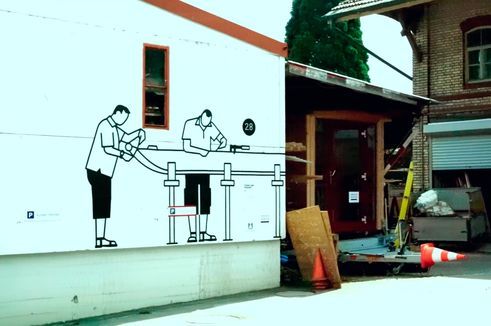
Kunstbiennalen – Wenn Künstler zu Kuratoren werden
Ein Artikel von Katerina Valdivia Bruch für Goethe.de
Wie sehen Ausstellungen aus, die von Künstlern kuratiert werden, und was macht sie so besonders? Was unterscheidet den künstlerischen Ansatz von einem kuratorischen? Vier Experten der Kunstszene (der Künstler und Kurator der Biennale Manifesta 11 Christian Jankowski, die Journalistin Claudia Wahjudi, der Kurator Anselm Franke und die Kuratorin, Autorin und Kritikerin Dr. Dorothee Richter) berichten über ihre Erfahrungen mit Kuratoren und Künstlern. Im Video äußern sich drei teilnehmende Künstlerinnen der Manifesta-Biennale 2016 zu dem Thema. >>
Der Artikel wird von einem Video begleitet, eine artract-Zusammenarbeit von Katerina Valdivia Bruch und Alicja Pahl.
youtube
Interviews mit den Künstlerinnen Georgia Sagri, Andrea Éva Győri und Una Szeemann während der europäischen Biennale Manifesta 11 in Zürich.
Video: Produktion: Alicja Pahl und Katerina Valdivia Bruch Konzept: Katerina Valdivia Bruch Kamera: Alicja Pahl Redaktion: PrinzplusPrinz Musik: Audiojungle Untertitel: Katerina Valdivia Bruch und Edith Watts
Bildnachweis: Videostandbild des Video-Interviews mit den Künstlerinnen Georgia Sagri, Andrea Éva Győri und Una Szeemann während der 11. Manifesta Biennale in Zürich, 2016 | Alicja Pahl und Katerina Valdivia Bruch | © Alicja Pahl und Katerina Valdivia Bruch
#Manifesta 11#Kuratoren#Künstler#Katerina Valdivia Bruch#Alicja Pahl#Goethe.de#zeitgenössische Kunst
0 notes
Text
Győri Andrea Éva: Phantasy after Analyses
A Fotóhónap2018 kiállítása
2018. november 14. – december 2., MIKVE Galéria – Budavári Palota nyugati pincerendszer (1014, Budapest Palota út 1.)
Győri Andrea Éva első magyarországi kiállítása az emberi test és a tudat kapcsolatával foglalkozik. Személyes és közösségi lét határán mozgó viszonyokat modellez, azaz az intimitást, maszturbációt, vágyakat, párkapcsolatot és a betegség következtében…
View On WordPress
0 notes